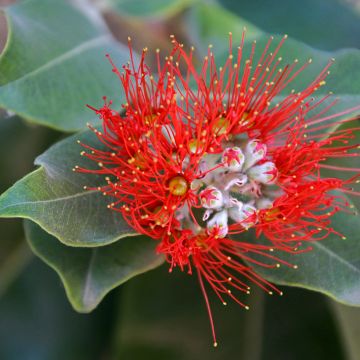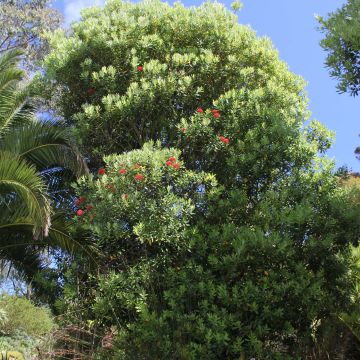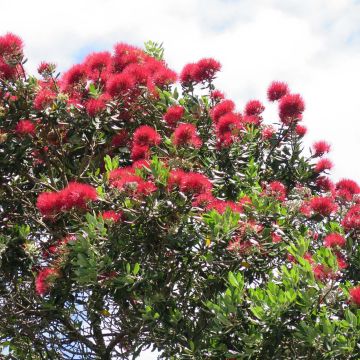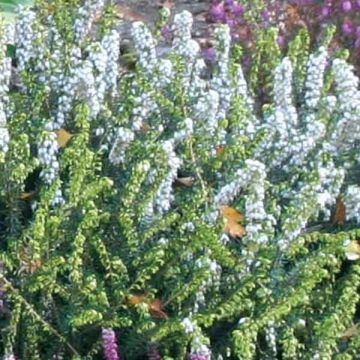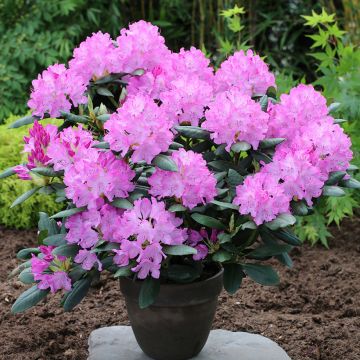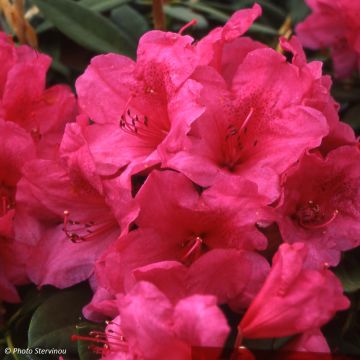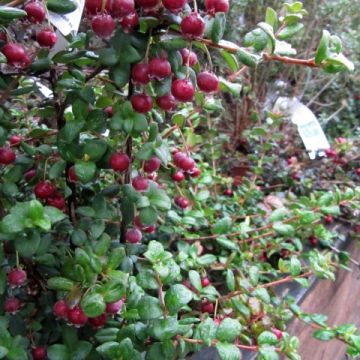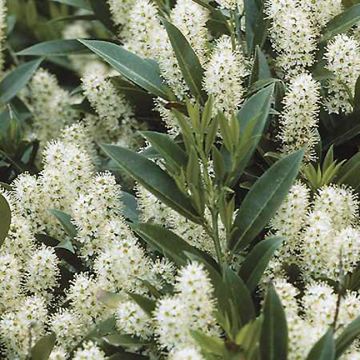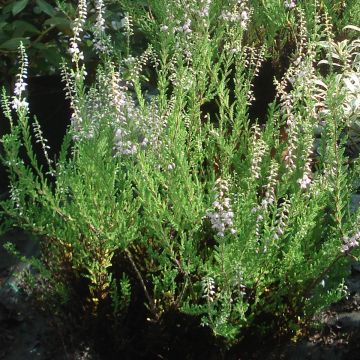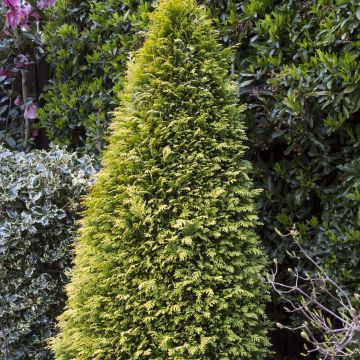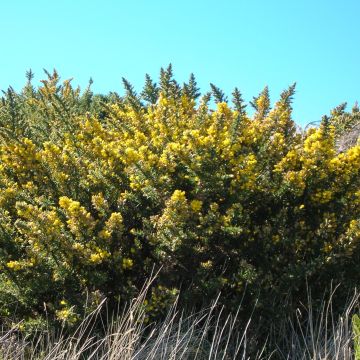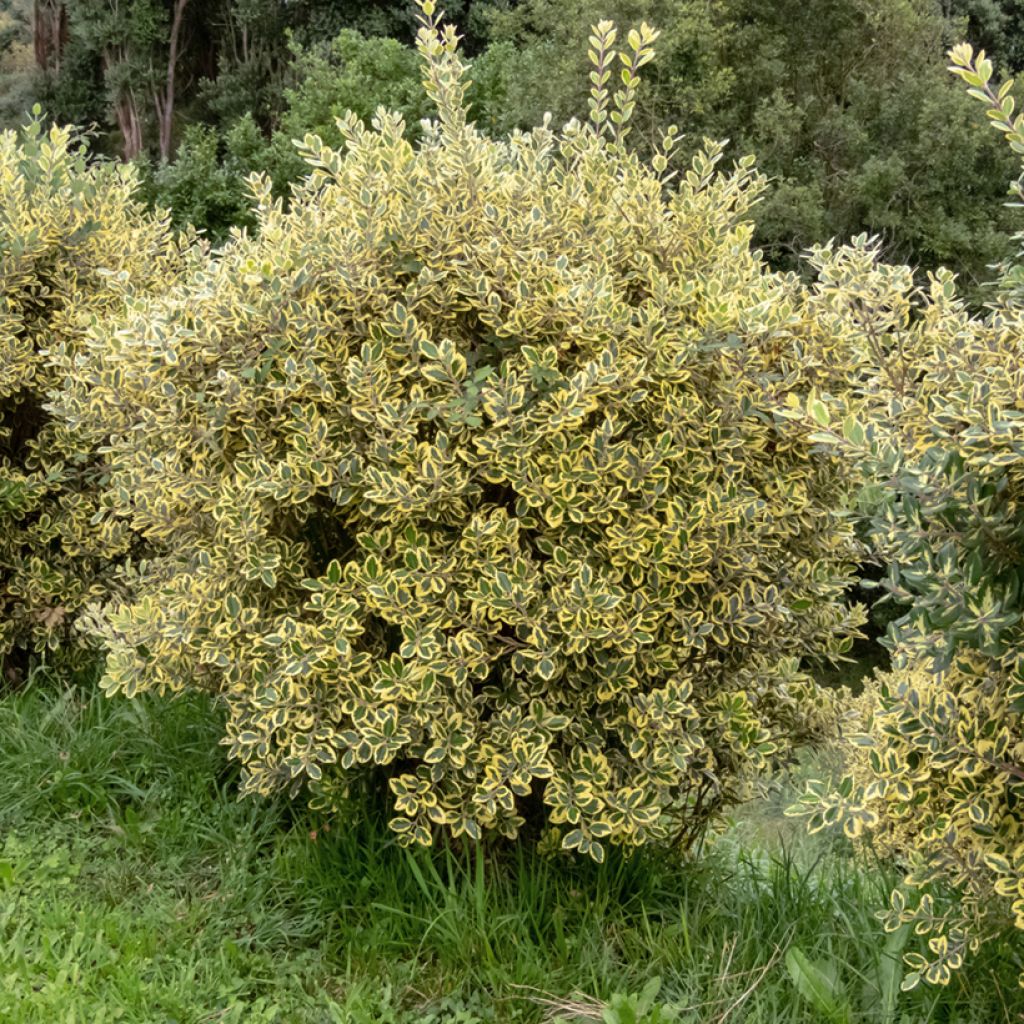

Metrosideros excelsa Aurea
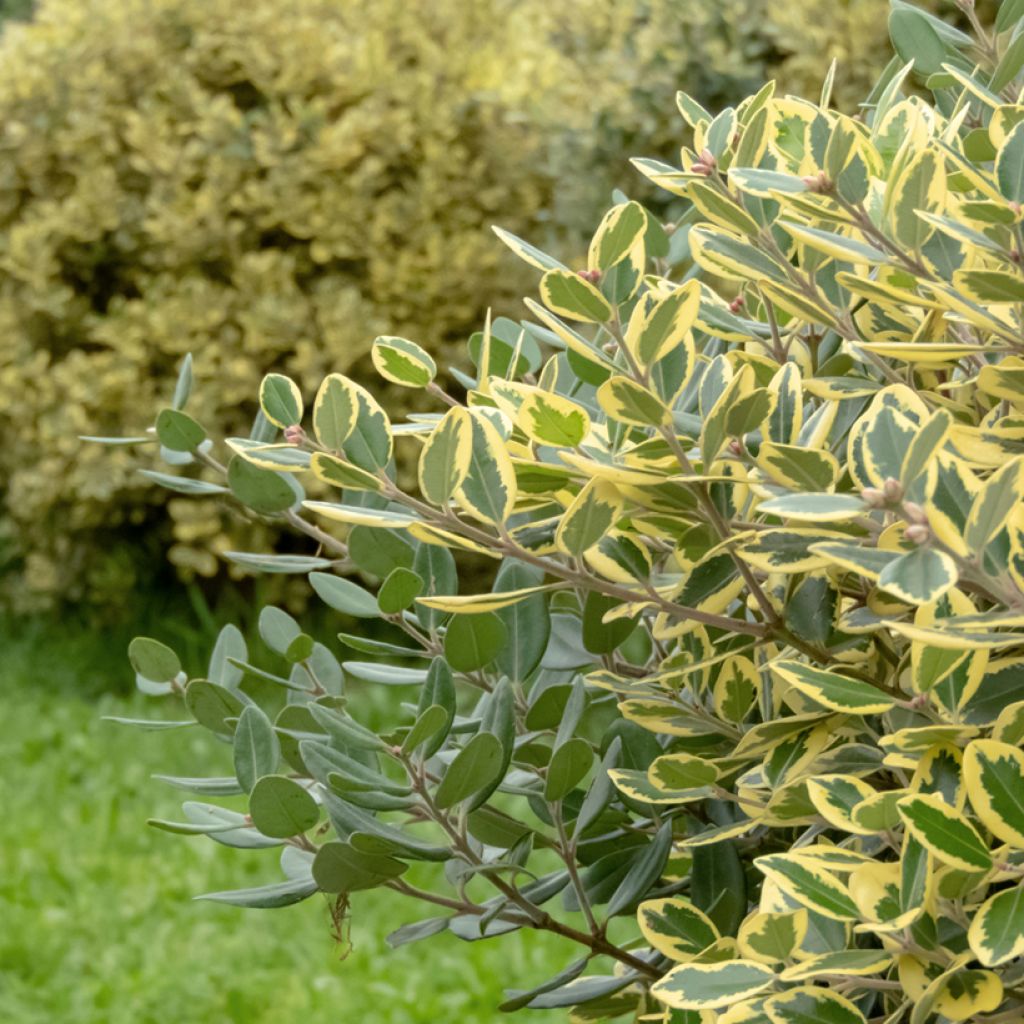

Metrosideros excelsa Aurea
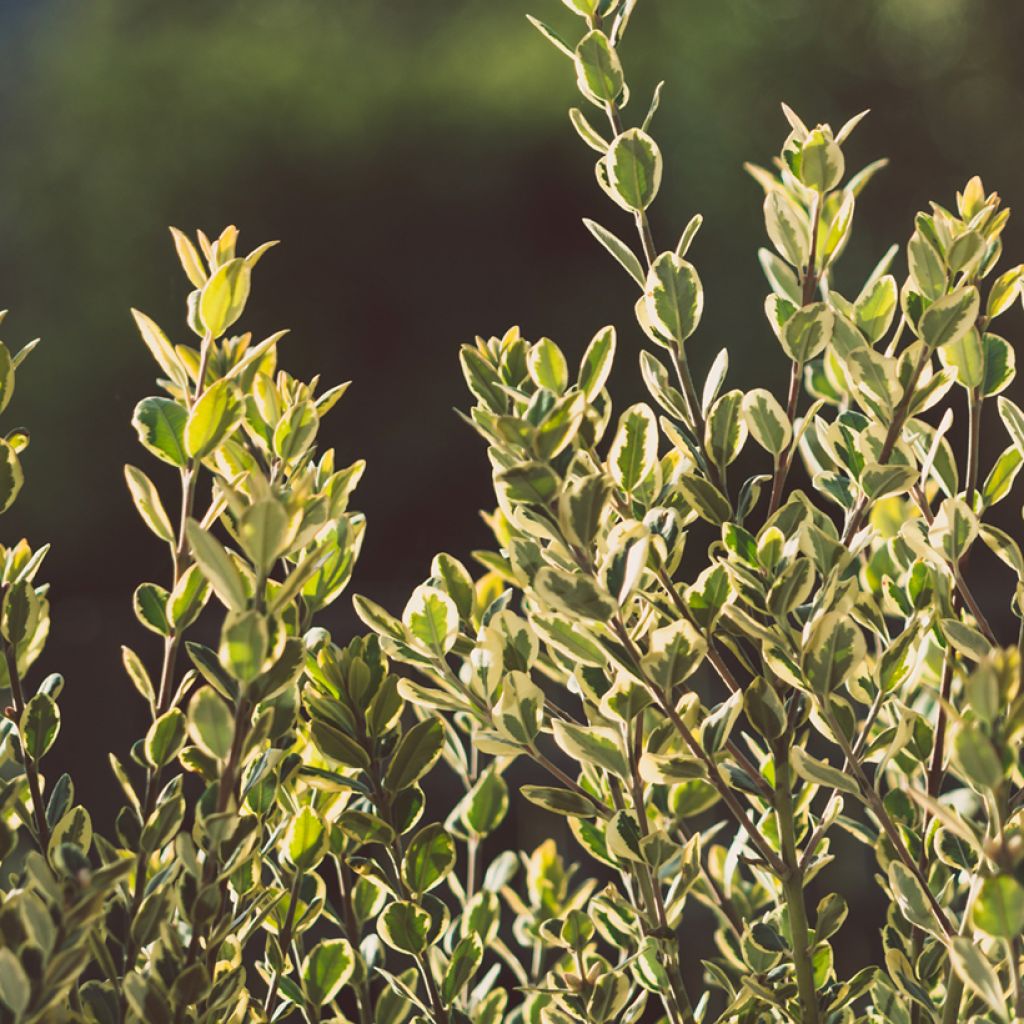

Metrosideros excelsa Aurea
Metrosideros excelsa Aurea
Metrosideros excelsa Aurea
Pohutukawa
This item cannot be shipped to the selected country
Delivery charge from €5.90
Delivery to Corse prohibited
More information
Schedule delivery date,
and select date in basket
This plant carries a 24 months recovery warranty
More information
We guarantee the quality of our plants for a full growing cycle, and will replace at our expense any plant that fails to recover under normal climatic and planting conditions.
From €5.90 for pickup delivery and €6.90 for home delivery
Express home delivery from €8.90.
Delivery to Corse prohibited: UE law prohibits the import of this plant from mainland France to Corse as part of the fight against Xylella fastidiosa. Please accept our sincere apologies.
More information
Does this plant fit my garden?
Set up your Plantfit profile →
Description
Metrosideros excelsa 'Aurea' is an evergreen bush native to New Zealand, suitable for the mildest climates. Its dense, dark green, slightly glossy foliage is adorned with a yellow edge that provides ornamental contrast throughout the seasons. Its flowering, which lasts a good part of the summer, makes it particularly attractive, as the scarlet red pompoms formed by numerous stamens emerge. Fairly easy to grow in slightly acidic soil and a sunny exposure in warm coastal areas, elsewhere it will need to be planted in a container to overwinter it away from frost.
Metrosideros is a member of the Myrtaceae family, which comprises 3000 species, with well-known genera such as Myrtle , Callistemon with bottlebrush-like flowers, and of course, the large group of Eucalyptus. There are 54 species of Metrosideros, trees, bushes, and woody vines, found in the Cape Province (South Africa), the Pacific Islands, and notably New Zealand, the home of Metrosideros excelsa. Originating from the coastal areas of the North Island, it has been introduced to the South Island. It naturally occurs in summer in the forests of Agathis australis - or Kauris - an Australian conifer, and sometimes even forms forests on its own. Known as "pohutukawa" by the Maoris, meaning "splashed by the sea," which aptly describes its resistance to spray (and wind). English speakers more commonly refer to it as the "Christmas tree" as it blooms at that time in this Southern Hemisphere country, where the seasons are reversed compared to Europe. In its natural habitat, the plant forms a large tree that can reach 20 m in height, with a trunk up to 2 m in diameter. The tree forms a broad crown, able to produce lateral branches that, upon contact with the ground, root to form new trunks. It also produces adventitious roots from the branches that hang down to the ground, giving it a very characteristic appearance. Lastly, its robust root system, well adapted to volcanic terrain, allows it to securely anchor into rock.
Metrosideros excelsa 'Aurea' is a horticultural variety with variegated yellow foliage ("aurea" in Latin), distinct from the yellow-flowered form of the botanical species (M. excelsa var. aurea). Much smaller in size than the species, this bush generally won't exceed 2.50 m in height with a spread of 1.50 to 1.80 m in warmer gardens; its hardiness is quite limited. It forms fairly dense vegetation, with a slow to medium growth rate, consisting of relatively flexible, thin branches. These branches bear opposite, elliptical to ovate, approximately 4-6 cm long, leathery, evergreen leaves with a glossy surface. Their dark green colour is brightened by a somewhat irregular yellow margin, giving them a superb appearance throughout the year.
From June onwards, the eye-catching inflorescences begin to appear. Typical of the Myrtaceae family, the flowers, mainly clustered in cymes at the ends of the branches, consist primarily of 4-5 cm long stamens, in a particularly decorative scarlet red hue. The 5 petals and 5 sepals are much more discreet and go unnoticed. The flowering period extends for several weeks, until August, or even a bit longer in some years. The ensuing fruits are small capsules with no ornamental value.
In the few areas mild enough to allow for its cultivation in open ground, Metrosideros excelsa 'Aurea' will blend beautifully in an exotic bed. Plant it alongside Proteaceae, such as the genus Leucadendron or Protea, whose irresistible patterns will complement your scene. Add another Myrtaceae with mauve flowers, such as Callistemon citrinus 'Mauve Mist' with long bottlebrush-like inflorescences, and to add height to your bed, a Brachychiton acerifolius. This lesser-known Australian tree will dazzle you with its resplendent scarlet red blossoms.
Report an error about the product description
Metrosideros excelsa Aurea in pictures


Plant habit
Flowering
Foliage
Botanical data
Metrosideros
excelsa
Aurea
Myrtaceae
Pohutukawa
Cultivar or hybrid
Other Metrosideros
Planting and care
Metrosideros excelsa 'Aurea' will thrive in a light soil, preferably slightly acidic and not too poor, humus-bearing, well-drained, rather dry in winter, slightly moist in summer, especially if grown in a pot. However, it is a relatively accommodating bush in terms of soil, accepting some limestone and tolerating summer drought quite well once well-rooted, after three years. Soil drainage is very important to enhance cold resistance. It tolerates sea spray and wind very well. Plant it after the last frosts. It will flourish in full sun or partial shade. Its cold resistance does not exceed -2°C/-3°C for short periods when mature. Young plants are even less cold-resistant so grow them in pots until they reach a minimum height of 50 cm. Wrap in winter fleece and protect from the cold as much as possible. Place it in the warmest corner of the garden, in full sun, against a south-facing wall. Except in the mildest coastal areas, it will be essential to cultivate it in a large pot to overwinter, in a bright, airy, but unheated room. To shape it, you can prune the stems in autumn or after flowering to remove any obstructive or unsightly branches and dead wood.
Pot Culture:
Ensure good drainage at the bottom of a large pot (layer of gravel or pottery shards). Use a light substrate, enriched with river sand, peat and leaf compost, and add some slow-release fertiliser in spring. Water generously in summer with water, if possible not too calcareous, ideally rainwater, letting the soil dry out a bit between waterings. Mist the foliage in very hot weather. In winter, reduce watering. Repot once a year, in spring.
Planting period
Intended location
Care
This item has not been reviewed yet - be the first to leave a review about it.
Evergreen shrubs
Haven't found what you were looking for?
Hardiness is the lowest winter temperature a plant can endure without suffering serious damage or even dying. However, hardiness is affected by location (a sheltered area, such as a patio), protection (winter cover) and soil type (hardiness is improved by well-drained soil).

Photo Sharing Terms & Conditions
In order to encourage gardeners to interact and share their experiences, Promesse de fleurs offers various media enabling content to be uploaded onto its Site - in particular via the ‘Photo sharing’ module.
The User agrees to refrain from:
- Posting any content that is illegal, prejudicial, insulting, racist, inciteful to hatred, revisionist, contrary to public decency, that infringes on privacy or on the privacy rights of third parties, in particular the publicity rights of persons and goods, intellectual property rights, or the right to privacy.
- Submitting content on behalf of a third party;
- Impersonate the identity of a third party and/or publish any personal information about a third party;
In general, the User undertakes to refrain from any unethical behaviour.
All Content (in particular text, comments, files, images, photos, videos, creative works, etc.), which may be subject to property or intellectual property rights, image or other private rights, shall remain the property of the User, subject to the limited rights granted by the terms of the licence granted by Promesse de fleurs as stated below. Users are at liberty to publish or not to publish such Content on the Site, notably via the ‘Photo Sharing’ facility, and accept that this Content shall be made public and freely accessible, notably on the Internet.
Users further acknowledge, undertake to have ,and guarantee that they hold all necessary rights and permissions to publish such material on the Site, in particular with regard to the legislation in force pertaining to any privacy, property, intellectual property, image, or contractual rights, or rights of any other nature. By publishing such Content on the Site, Users acknowledge accepting full liability as publishers of the Content within the meaning of the law, and grant Promesse de fleurs, free of charge, an inclusive, worldwide licence for the said Content for the entire duration of its publication, including all reproduction, representation, up/downloading, displaying, performing, transmission, and storage rights.
Users also grant permission for their name to be linked to the Content and accept that this link may not always be made available.
By engaging in posting material, Users consent to their Content becoming automatically accessible on the Internet, in particular on other sites and/or blogs and/or web pages of the Promesse de fleurs site, including in particular social pages and the Promesse de fleurs catalogue.
Users may secure the removal of entrusted content free of charge by issuing a simple request via our contact form.
The flowering period indicated on our website applies to countries and regions located in USDA zone 8 (France, the United Kingdom, Ireland, the Netherlands, etc.)
It will vary according to where you live:
- In zones 9 to 10 (Italy, Spain, Greece, etc.), flowering will occur about 2 to 4 weeks earlier.
- In zones 6 to 7 (Germany, Poland, Slovenia, and lower mountainous regions), flowering will be delayed by 2 to 3 weeks.
- In zone 5 (Central Europe, Scandinavia), blooming will be delayed by 3 to 5 weeks.
In temperate climates, pruning of spring-flowering shrubs (forsythia, spireas, etc.) should be done just after flowering.
Pruning of summer-flowering shrubs (Indian Lilac, Perovskia, etc.) can be done in winter or spring.
In cold regions as well as with frost-sensitive plants, avoid pruning too early when severe frosts may still occur.
The planting period indicated on our website applies to countries and regions located in USDA zone 8 (France, United Kingdom, Ireland, Netherlands).
It will vary according to where you live:
- In Mediterranean zones (Marseille, Madrid, Milan, etc.), autumn and winter are the best planting periods.
- In continental zones (Strasbourg, Munich, Vienna, etc.), delay planting by 2 to 3 weeks in spring and bring it forward by 2 to 4 weeks in autumn.
- In mountainous regions (the Alps, Pyrenees, Carpathians, etc.), it is best to plant in late spring (May-June) or late summer (August-September).
The harvesting period indicated on our website applies to countries and regions in USDA zone 8 (France, England, Ireland, the Netherlands).
In colder areas (Scandinavia, Poland, Austria...) fruit and vegetable harvests are likely to be delayed by 3-4 weeks.
In warmer areas (Italy, Spain, Greece, etc.), harvesting will probably take place earlier, depending on weather conditions.
The sowing periods indicated on our website apply to countries and regions within USDA Zone 8 (France, UK, Ireland, Netherlands).
In colder areas (Scandinavia, Poland, Austria...), delay any outdoor sowing by 3-4 weeks, or sow under glass.
In warmer climes (Italy, Spain, Greece, etc.), bring outdoor sowing forward by a few weeks.

































